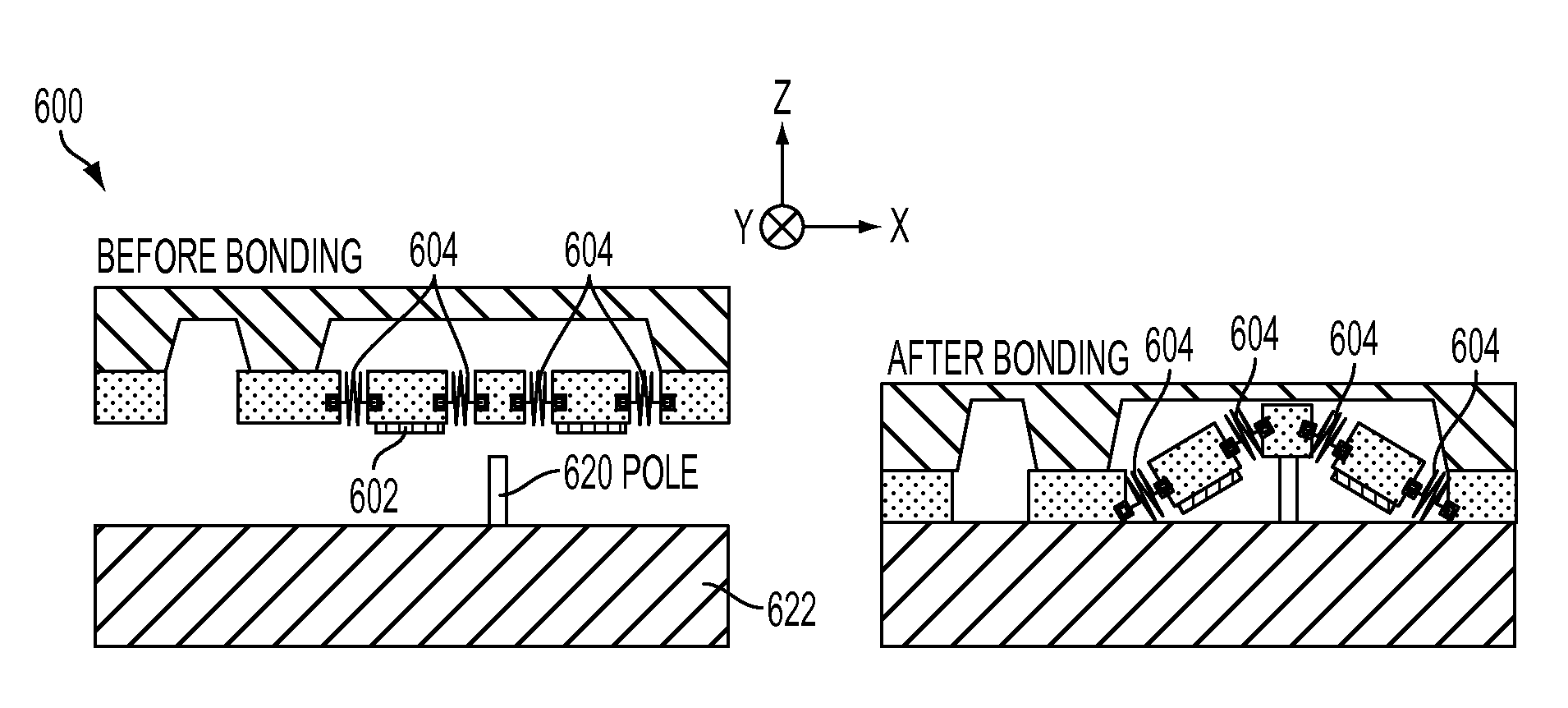Micromachined magnetic field sensors
a magnetic field sensor and micro-machine technology, applied in the field of sensing devices, can solve the problems of large azimuth error of hall sensors constructed by multiple sensors, difficulty in constructing on-chip 3-axis hall sensors required by inability to meet the requirements of low-cost electronic compass applications, etc., to enhance the performance of magnetic field sensors, reduce sensor offset, and increase sensor sensitivity
- Summary
- Abstract
- Description
- Claims
- Application Information
AI Technical Summary
Benefits of technology
Problems solved by technology
Method used
Image
Examples
second embodiment
[0037]an X axis or Y axis magnetic field sensor 100 is shown in FIG. 3A-3C. The side-view of a device structure with potential integration with other sensors in the process platform is illustrated in FIG. 3C. The structure has a Hall plate 102 with at least four terminals 104(a)-104(d). The Hall plate 102 is as narrow as a few microns in the Y direction and as deep as the thickness of the device layer in the Z direction. The plate is fabricated on a low-doped single crystal device layer and patterned by DRIE process to form an isolation trench. The device layer is preferred to have N-type doping for its high mobility.
[0038]The electrical terminals 104(a)-104(d) are connected through conductive wiring bridges in the Y direction across the isolation trench, and further connected to the corresponding pads on a conventional IC substrate. To establish the conductive wiring bridges across the isolation trench, a sacrificial layer is deposited followed by the deposition of the conductive w...
third embodiment
[0040]an X axis or Y axis magnetic field sensor 200 is shown in FIG. 4A-4C. The structure has a Hall plate 202 with at least four terminals 204(a)-204(d). The plate is fabricated on a low doped single crystal device layer and patterned by DRIE process to form an isolation trench. The device layer is preferred to have N-type doping for its high mobility.
[0041]T1204(a) and T2204(b) are the source terminals connected to electrical ground and electrical supply such as voltage source or current source, respectively. The remaining two terminals T3204(c) and T4204(d) are the sensing terminals which are connected to voltage sensing circuitry. By supplying the current flowing in Z direction, a Hall voltage between T3 and T4 is generated, which is a function of the magnetic field, and it is sensed by the voltage sensing circuitry. The side-view of a device structure with potential integration with other sensors in the process platform is illustrated in FIG. 4C.
[0042]A fourth embodiment of an ...
fifth embodiment
[0043]an X or Y axis magnetic field sensor 400 is shown in FIG. 6A-6C. The structure and manufacture process is similar to previous embodiments, except for the implementation of a high mobility material 406 deposited on the device layer, orientation of the Hall plate 402 and the arrangement of the sensing terminals.
[0044]T1404(a) and T2404(b) are the source terminals connected to electrical ground and electrical supply such as voltage source or current source, respectively. Near the edge of the isolation trench 403, the current first flows in the negative Z-direction toward the bottom of the device layer, then bends toward the positive Z-direction. The remaining two terminals T3404(c) and T4404(d) are the sensing terminals. The Hall plate 402 is orientated in YZ plane with current flowing in Z direction. Upon applying a magnetic field in X-direction, a Hall voltage between T3404(c) and T4404(d) is generated, is a function of the magnetic field, and is sensed by the sensing circuitry...
PUM
 Login to View More
Login to View More Abstract
Description
Claims
Application Information
 Login to View More
Login to View More - R&D
- Intellectual Property
- Life Sciences
- Materials
- Tech Scout
- Unparalleled Data Quality
- Higher Quality Content
- 60% Fewer Hallucinations
Browse by: Latest US Patents, China's latest patents, Technical Efficacy Thesaurus, Application Domain, Technology Topic, Popular Technical Reports.
© 2025 PatSnap. All rights reserved.Legal|Privacy policy|Modern Slavery Act Transparency Statement|Sitemap|About US| Contact US: help@patsnap.com



